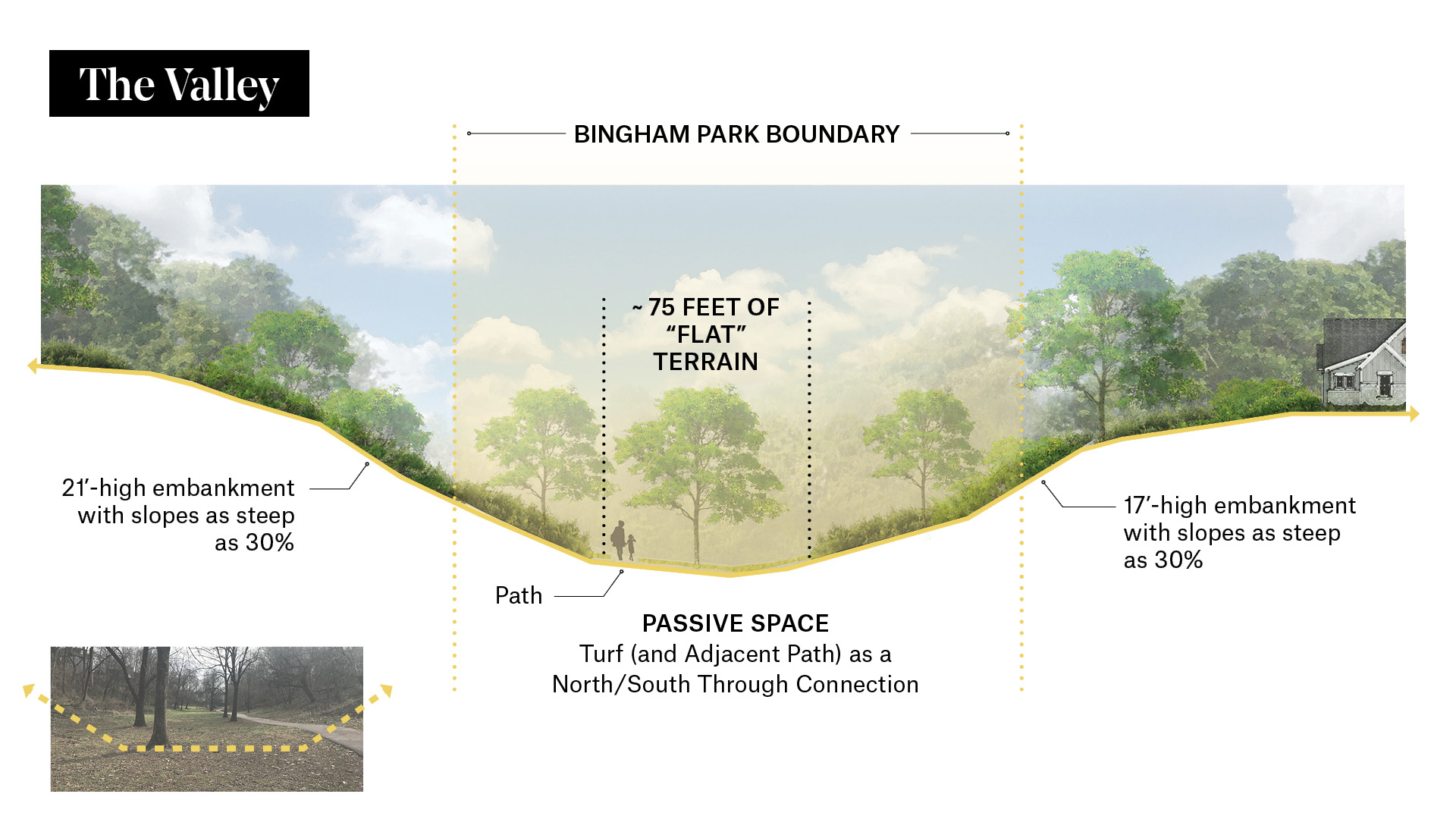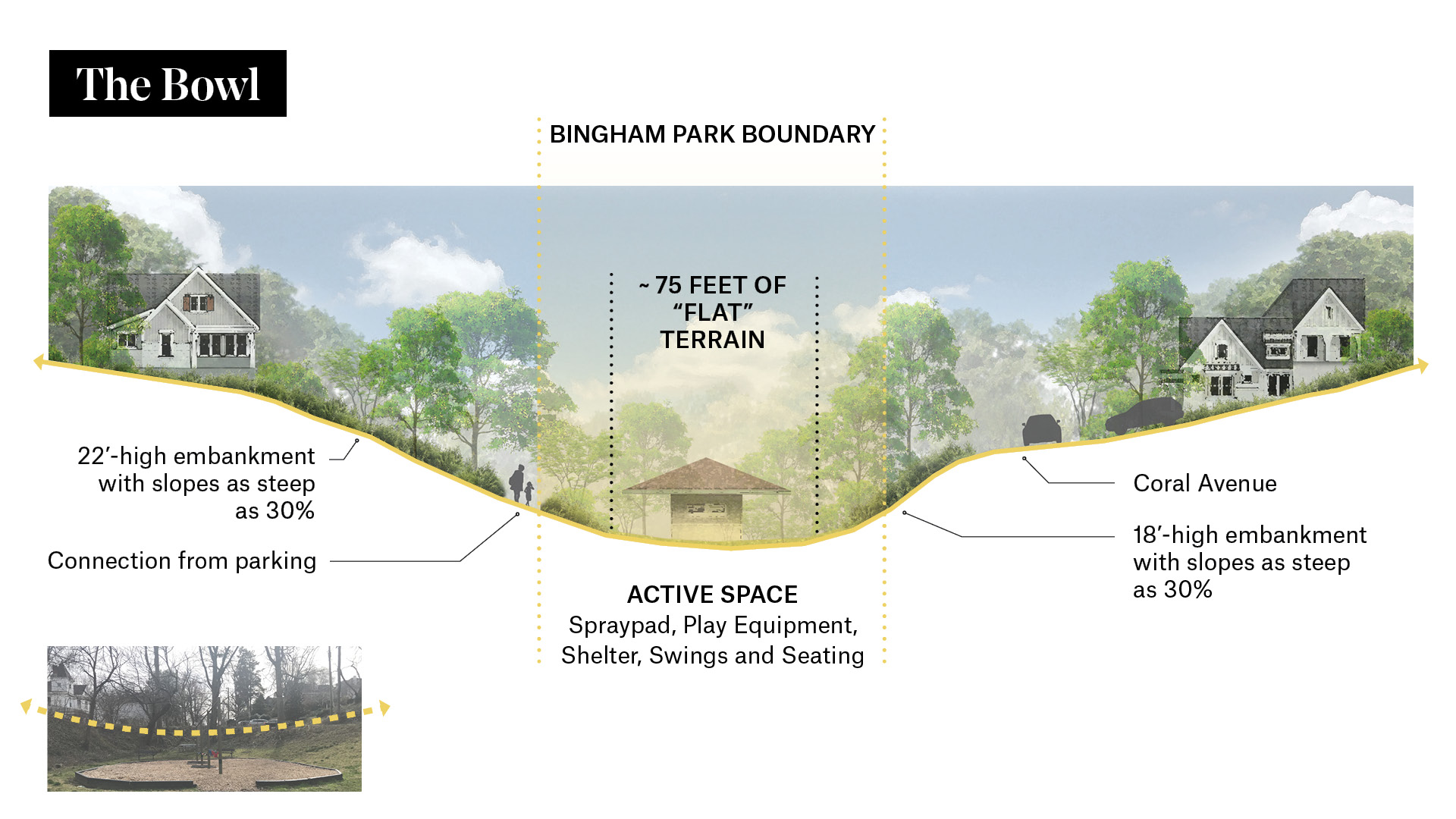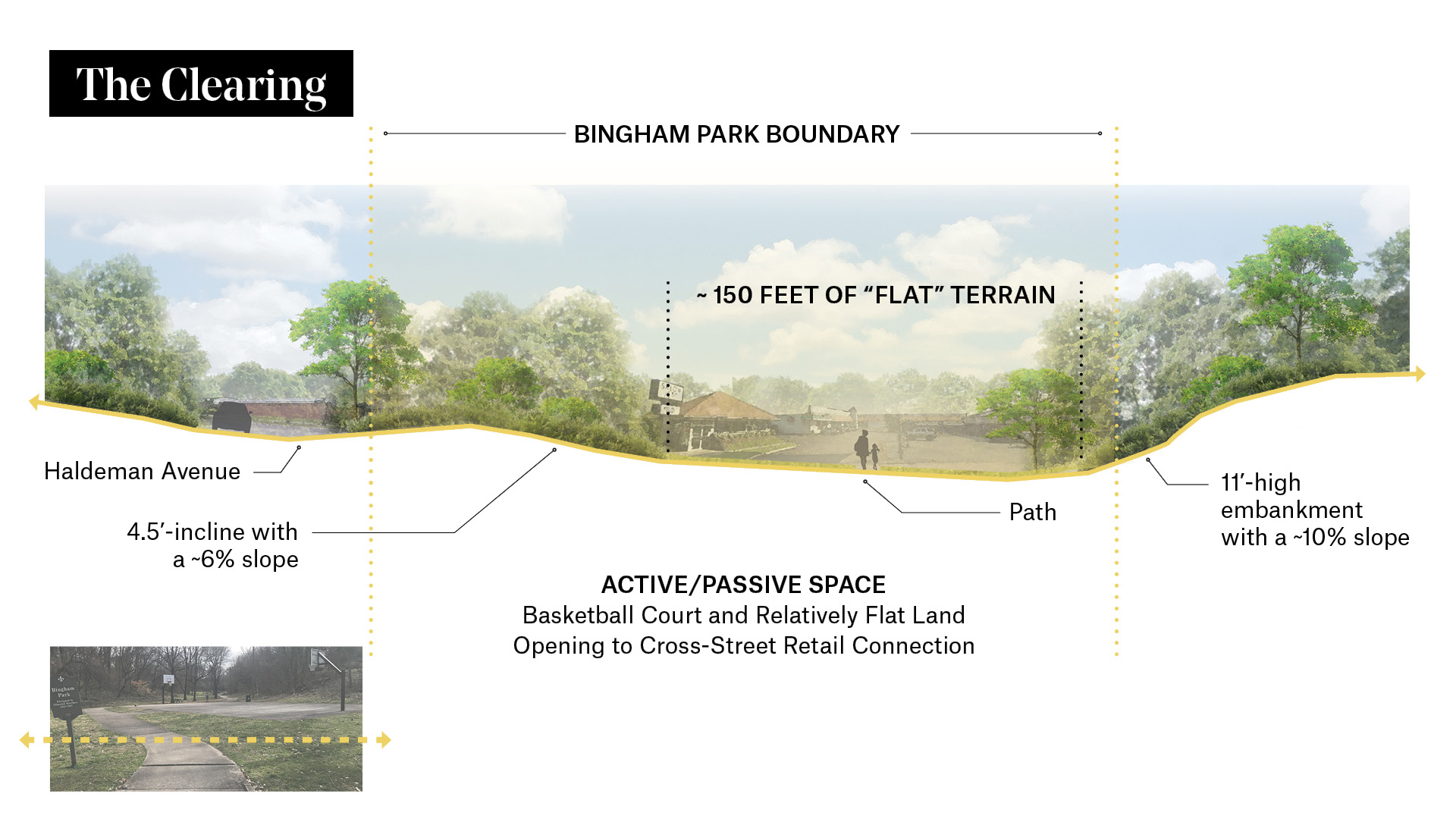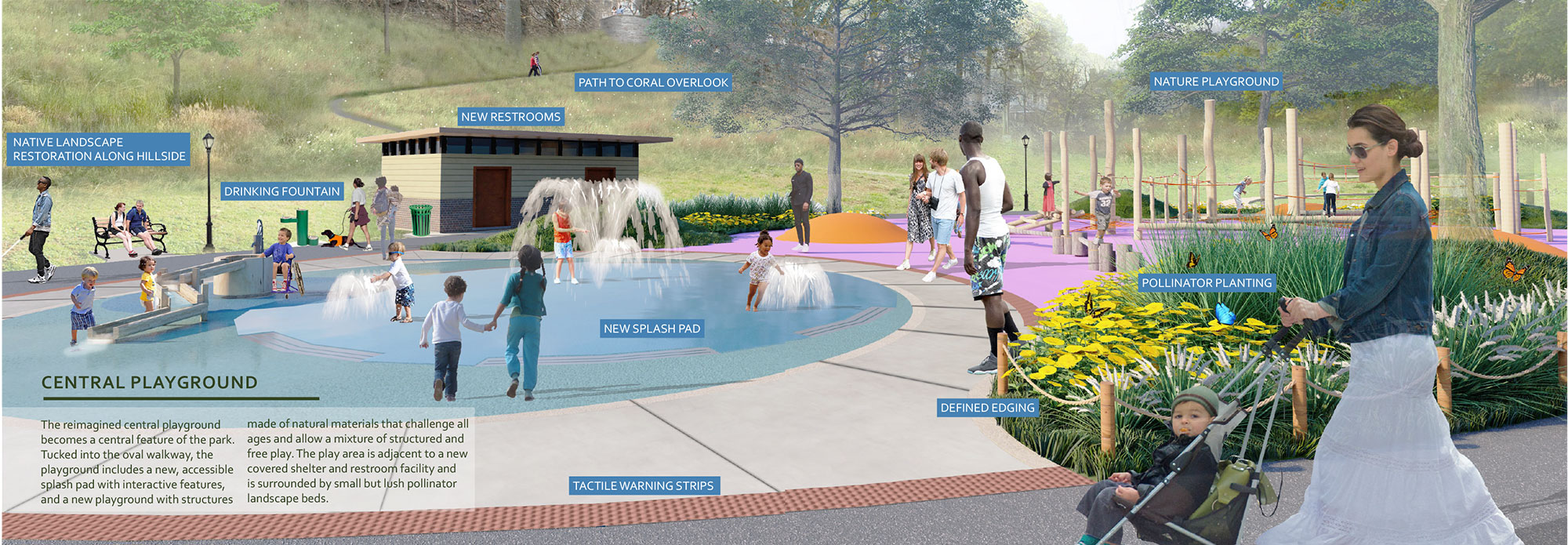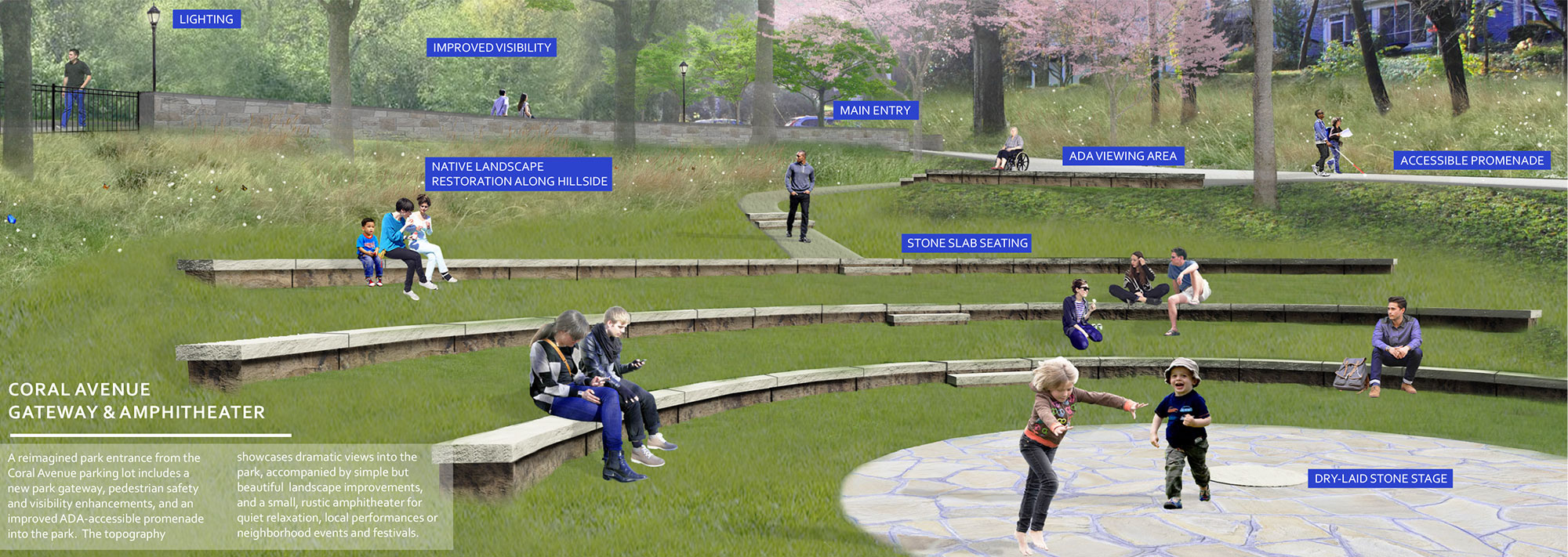Located just east of downtown Louisville, Bingham Park has been an ever-present community asset for the Clifton and Clifton-Heights neighborhoods. With a park design that began in the early 1900s by the Olmsted Brothers, Bingham Park has expanded its footprint over the years now occupying nearly 5 acres of land. Although the park has been around for over a century, the facilities and amenities have not been updated since the 1970s. Diverse and bustling neighborhoods surround the park, presenting the perfect opportunity to bring the park into the 21st century.
Louisville Parks and Recreation and Louisville Olmsted Parks Conservancy called on Gresham Smith to update the park’s layout and amenities to accommodate the growing demand for quality neighborhood parks. After extensive public engagement with residents, business owners and key stakeholders, our team developed a comprehensive master plan that creates an accessible, equitable and sustainable park.
Olmsted Brothers began design
acres
programmatic areas
Diverse and bustling neighborhoods surround the park, presenting the perfect opportunity to bring the park into the 21st century.
Embracing the Elements
Bingham Park is a hidden and scenic piece of land most notably characterized by steep embankments on each side that create long views. The park presents a unique set of challenges and opportunities with its varied terrain and oblong shape. To properly address the topography of the park, we divided the landscape into three distinct zones: “The Bowl,” “The Valley” and “The Clearing.”Engaging the Public During a Pandemic
Due to COVID-19, our public engagement process for the this master plan looked a little different. Because we were unable to gather in-person, we focused on virtual public engagement. This included coordinating virtually with a community task force appointed by the client, utilizing online surveys, implementing informational boards in the park, and launching a direct-text campaign allowing park visitors to communicate directly with the planning team to offer feedback, insights and questions.
The Final Result
The final master plan builds on the original Olmsted Park design from more than 100 years ago, amplifying the park’s natural beauty and creating a place that can meet the needs of the growing community. The new master plan designates a central promenade and identifies three main programmatic areas: the amphitheater, a central playground, and an active play and exercise area.
The plan also refreshes the existing infrastructure including bathrooms, walking trails, an outdoor exercise area, and a resurfaced basketball court. The updated amenities create a high-quality outdoor space for visitors to spend time with family and friends in a beautiful, natural setting.
Project Contact
Our team is committed to improving the places we call home.

